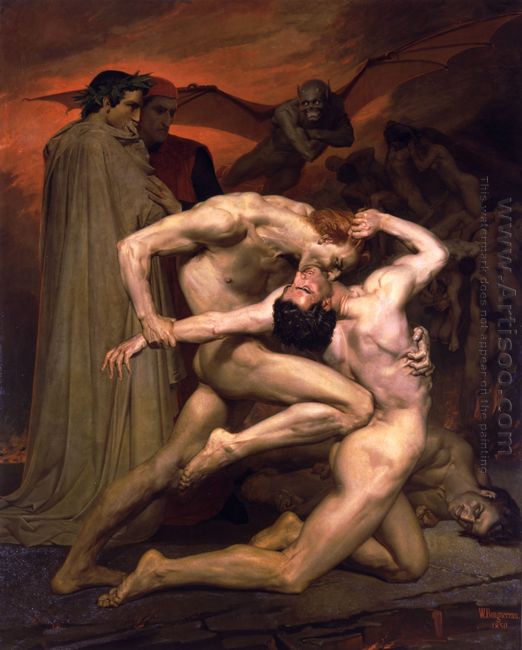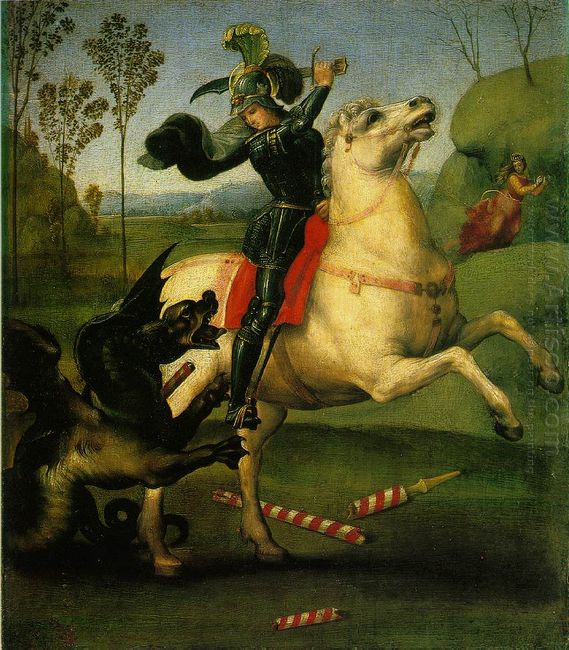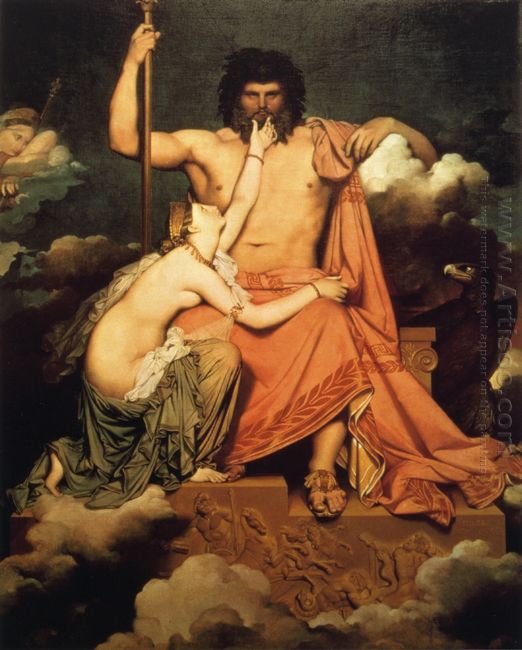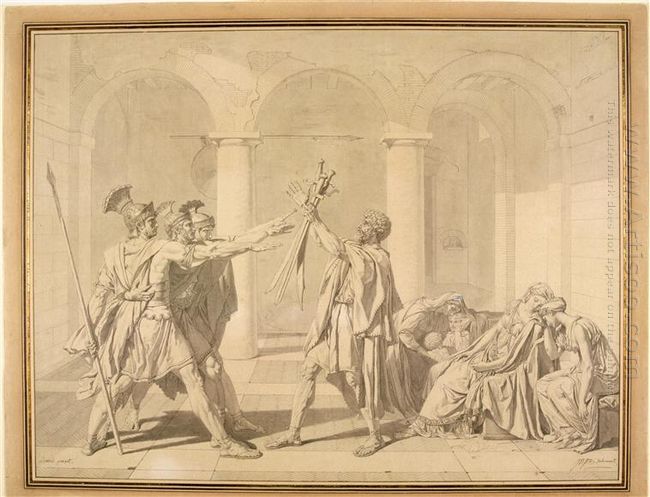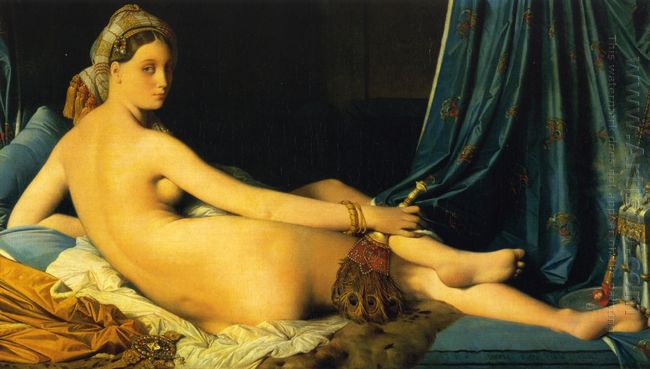Dante and Virgil in the Hell is a oil painting on canvas by French academic painter Bouguereau in 1850. In his paintings he often used themes of mythology, allegory and love, with peace and idealization. Unlike his regular artworks, Dante and Virgil describe a total different atmosphere. It depicts a scene from a classical poem written by Dante Alighieri in 1300’s in which Dante is led to the Hell by the dead poet Virgil. Bouguereau used strong and bright color to show the scene and the seven deadly scenes in the Hell.
Dante was a major Italian poet of the Middle Ages. He was exiled by the church for the reason that he opposed the Pope and advocated freedom. Virgil was the greatest poet in Rome during BC70-BC19. Though Virgil lived 1300 years earlier than Dante, Dante considered Virgil as his teach. In Dante’s Divine Comedy, he was invited by Virgil through the levels of the Hel and witnessed the horrors there. In the Neoclassicism painting, Dante is dressed in a cloaked and covering his mouth with astonish and unbelievable expression. His eye sight stays outside the painting, making us wondering what exactly horrible things he is looking at. Virgil attempts to stop Dante from going award with a hand. Before Dante and Virgil are two men fighting fiercely with exaggerate and extensive movement. These two men are the most outstanding features that catch viewer’s eyes at first sight. Their bodies are shined with intense light. They represent the wrath in the seven deadly sins: one man is biting the other’s neck and slamming his knee into the victim’s back while the victim’s body is distorted with suffering face. Behind them lies a man, who looks at all the things happing before him with indifference, representing sloth. People in the further background stands for other sins representatively--greed, pride, lust, envy, and gluttony.

